Final Fantasy VII: Rebirth rejoins the cast just after the events of Final Fantasy VII: Remake. They escaped Midgar and are now on the trail of Sephiroth, desperate to stop the madman from dooming the world. They have little to go on, except for a trail of black-robed figures. As if to make matters worse, Cloud is experiencing hallucinations of Sephiroth, there's something weird going on with the planet, and the forces of Shinra are in full mobilization under their new president.
Overall, Rebirth's plot falls firmly into the "middle part of the trilogy" type of writing, where a huge chunk of its writing is building toward events that will occur in the next game. Thankfully, Rebirth largely makes it work. The plot feels almost like an extended road trip, with a lot of time spent on the characters, their histories and their personalities. Events of importance still occur, including those from the original game and some new ones that tie into the mobile game Ever Crisis, but this is The Empire Strikes Back of the trilogy.
The character writing in Rebirth is on point. Despite juggling a larger cast than the original game, it does a fantastic job of fleshing out each character. You get a much better idea of the friendships and interactions of the main cast, and many of the side characters get expanded tales. Tifa and Aerith's friendship is a highlight, but pretty much everyone gets at least one chance to steal the show. Red XIII benefits from the expanded focus in a way that fleshes out his character and gives him some much-needed texture. Probably the only real diversion is Cid, who is introduced in a different context from the original game. However, even this is clearly designed to introduce him in a softer context than the original's cursing, screaming tea-drinking curmudgeon who would be intolerable with voice acting.
More to the point, the game is frequently hilarious. Like the original game, it revels in shifting its tone wildly and being absurd and irreverent, and that works in its favor. You can go from dramatic sequences to absurd minigames and back again, and it generally works. The humor and lighthearted elements drive home the more serious segments. It's goofy, but so was the original game. Far from running away from the silly bits, Rebirth leaps into it wholeheartedly. Even the collectible card game has multiple plots involved, many of which lead to the funniest scenes in the entire game.
Coming off Remake, the elephant in the room is the overarching metaplot involving the mystery behind the branching fate of characters. The game makes no secret about it speeding toward the biggest spoiler in video game history, and a huge source of tension in the game is whether it remains the same or is diverted. For the most part, I think it juggles this aspect well, but like Remake, the ending goes over the top in a way that feels pretty different from the rest of the game. I didn't mind it, but if you disliked the Whisper plot in Remake, the metaplot in Rebirth won't change your mind.
Probably the most obvious change to Rebirth is the shift from the crowded and largely linear confines of Midgar to a genuine world map. The world of Rebirth is divided into multiple open-world areas, each of which contains its own side-quests, hidden secrets, and more. A lot will feel familiar to anyone who has played an open-world game in the past decade, including towers you can activate to point out locations of interest, unlockable fast-travel locations, and more.
Once you get into an open-world area, you're free to explore, but your first step should be finding a Chocobo. Chocobos can be ridden around, and each area tends to have a specific breed of Chocobo that has a distinct ability that unlocks more movement options. One can climb walls, one can float through the air, one can use water to shoot into the sky, and more. Most abilities are limited to certain areas, so they're a way to expand the exploration options, rather than changing the core gameplay.
The open world in Rebirth is extremely fun to explore. Not everything is marked on the map, and if you decide to go off the beaten trail, you might find hidden paths, secret treasure caches, rare enemies, unexpected side-quests and more. There's a slight puzzle element to exploring, especially later, as you have to figure out the correct path to reach certain areas, but it's not too punishing and offers some nice variety.
Final Fantasy VII was known for its minigames,and Rebirth absolutely takes that to its extreme. Generally, you won't go long between a new or weird game. You'll play hot-and-cold treasure seeking with your Chocobo, engage in a turret minigame with Barret's gun arm, play Rocket League against a dog, and try to convince a chicken to follow you. There's an absolutely bewildering assortment of different games to play, most of which have multiple levels and gimmicks. There's even a fully dedicated collectible card game called Queen's Blood which is almost as addictive as Triple Triad and contains a shocking amount of content.
The minigames are fun. The ones that came from the original game have been all significantly improved, and the new ones are either fun or don't overstay their welcome. There are a couple that were pretty tedious, but at least in a couple of the cases, that was because the joke was that they were supposed to be tedious, and the game played with that. It isn't a 100% success rate, but it's enough of a success to keep the game fun even when it deviates from the norm. You can usually advance the plot; the minigames just yield bonus prizes for doing well. If you intend to see and do everything in the game, be prepared to do a lot of minigames.
Rebirth brings back the same combat system from Remake, but with a small host of improvements. As in that game, combat is a fusion of real-time and turn-based combat, where fighting in real time builds up ATB Charges that you can use to execute special moves or use items. A lot of the core combat feels familiar, but there are lots of small gameplay tweaks. Air combat has been significantly improved, making it easier for melee characters to fight flying foes. Every character now has access to a "perfect block" mechanic to nullify damage with a perfectly timed button press. Enemy mid-battle cut scenes seem better geared to not interrupt stagger periods, so you don't feel that one of your big damage moments is stolen.
The two new party members, Red XIII and Cait Sith, are both extremely fun to play. Red XIII serves as a party tank. As he blocks attacks, he builds up a Vengeance gauge that he can spend to go into a more powerful special mode or as fuel for buffs, healing or attacks, making him a well-rounded character. Cait Sith is two separate characters: Cait Sith (the cat) and his giant Moogle companion. You only play as Cait, but you can summon your Moogle to serve as an AI ally or a mount, with Cait gaining access to different moves depending on the situation.
Perhaps most importantly, Rebirth focuses on raising the entire party to roughly the level of Yuffie in the Remake DLC, rather than making strong characters more balanced. All of the original cast have gotten reworked so they play much better, often by incorporating elements of their kit that were considered essential into their base moves. For example, charging up and using Aerith's Tempest skill now grants a Familiar, while her alternate skill has been changed to teleporting to any active ward, so she has a lot of combat mobility and options. Meanwhile, Tifa gets a much-expanded suite of air combat options, and all of Barret's close-range weapon options have been folded into his long-range options, making him a more well-rounded character.
One of the big new features in the game is Synergy, which are team-up moves that come in two flavors: skills and abilities. Skills depend on the party composition, with each character offering an offensive and defensive option. For example, when playing as Cloud, your offensive skill with Barret allows you to bounce bullets at distant foes, so you can continue attacking even if the enemy is in the middle of move that would make you take damage. On the other hand, being paired with Tifa grants a power charge, a very slow but brutally powerful attack. His defensive move is Counterfire, which allows him to counter ranged attacks. These skills don't cost any ATB, so they can be worked into regular combat without trouble. Some are very situational, while others are immensely useful for regular combat, but they're a cool addition.
Synergy abilities are full-on combo attacks between two party members. Every combination of characters gets at least one and frequently get multiple. To use a Synergy abilities, you need to use regular abilities to build up Synergy charges. Once both party members have enough of a charge, they can use a Synergy ability, but the required amount of charge goes up the more you use a specific skill in combat. These attacks are not only incredibly powerful but confer buffs upon allies or debuffs upon enemies, such as temporary unlimited MP, access to higher-level limit breaks, or extending stagger time.
The dungeon design also tends to demand you spend time with every character. Frequently, the game changes up your parties, sometimes even throwing you in control of a character besides Cloud, so it's worthwhile to give everyone a shot. Thankfully, characters who aren't in the party still get full EXP and AP rewards, so there's no real challenge in keeping everyone up to par. Alas, you can't swap characters mid-battle, but you can set up three different pre-defined parties to instantly swap between, and that's enough to have one slot for each character plus Cloud.
The combat system, which was already great, really shines in Rebirth, and just about every change to the game is a net positive. The only minor complaints are that it can be a touch easy by default, but the new Dynamic difficulty gives you something between Normal and Hard, and the lack of playable Cid and Vincent. Similar to Red XIII in Remake, the characters are introduced in a non-playable format, but they're introduced early enough that Vincent feels like he should be coming along for the fights. Obviously, both characters are being saved for part three of the story, but it does feel more artificial that they're sidelined in this title.
All of this combines to create a game with an absolutely overwhelming amount of content. My first playthrough took 85 hours, and while that included all the main side-quests and a lot of the minor ones, there was still an overabundance of remaining games, including tons of challenge fights, the entirety of Hard mode, and more. There is just a lot of game in Rebirth, and it easily eclipses the length of even the original game. It's almost a pure delight from start to finish, to the point where my first thought after 85 hours was wanting to go back and do content that I hadn't completed.
Rebirth looks great, with absolutely gorgeous art design and amazing character models. Performance mode runs smooth as butter but at a cost to the resolution, while Graphic mode looks great but with a hit to performance. I stuck with Performance mode the whole way through and left happy. As good as the graphics are, the audio side knocks it out of the park. The voice acting for just about every character is absurdly good, with Red XIII and Cait Sith being standouts. The music is sublime. There are over 400 songs, some remixes of classic songs and new tunes, and almost all of them are fantastic. The closest thing to a complaint is that the new songs often have a distinct style from the returning classic songs, but it barely matters when you're grooving.
Final Fantasy VII: Rebirth knocks it out of the park. It takes the already excellent first game and expands it to a bigger and more populated world. The combat has been improved, the dungeon design is better, the story hits a lot more than it misses, and from start to finish, it was pretty much everything I could've wanted. Only a few nagging problems keep it from perfection, and it's a love letter to everything that makes Final Fantasy VII great.
Score: 9.8/10
More articles about Final Fantasy VII Rebirth


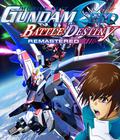
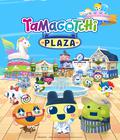
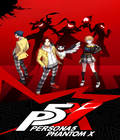
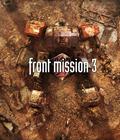
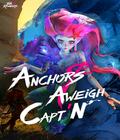
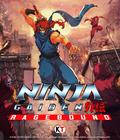
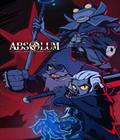


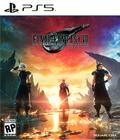 Final Fantasy VII Rebirth continues the story of Final Fantasy VII Remake, taking Cloud and the party out of Midgar into the wider world.
Final Fantasy VII Rebirth continues the story of Final Fantasy VII Remake, taking Cloud and the party out of Midgar into the wider world.




































